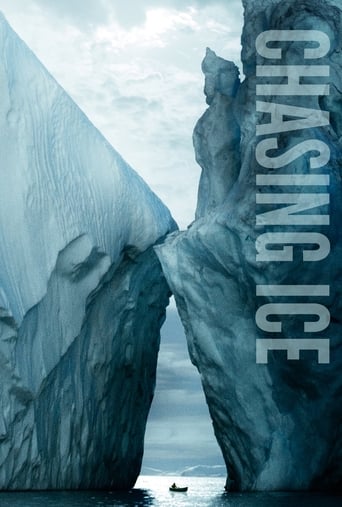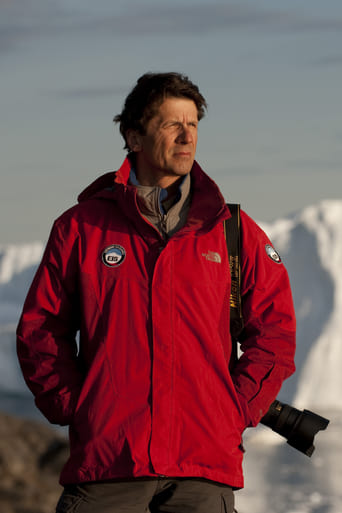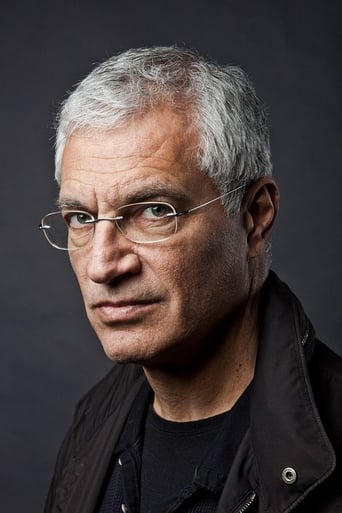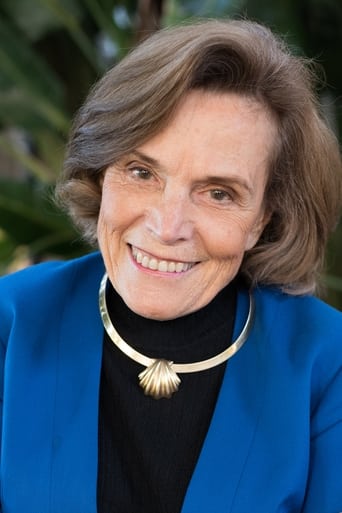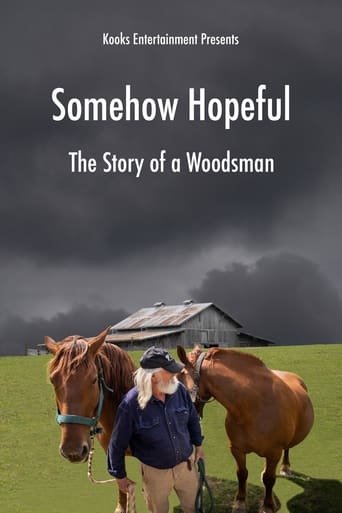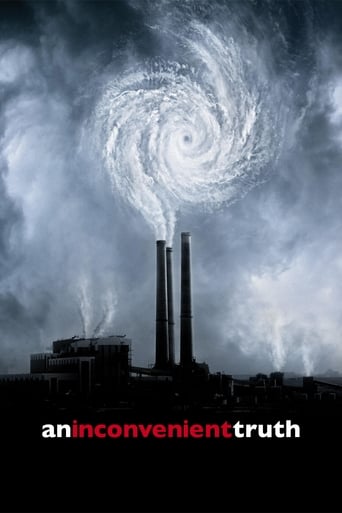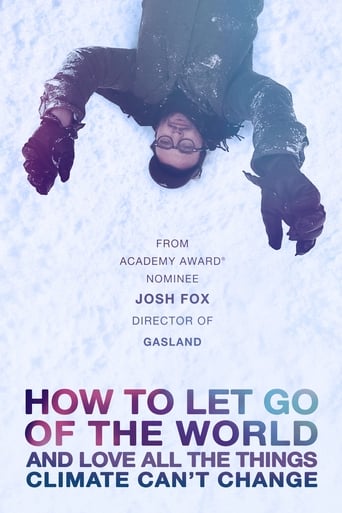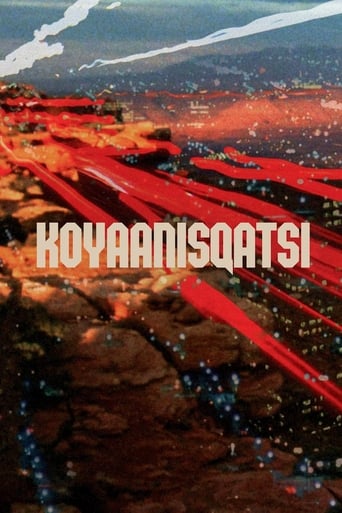Chasing Ice (2012)
When National Geographic photographer James Balog asked, “How can one take a picture of climate change?” his attention was immediately drawn to ice. Soon he was asked to do a cover story on glaciers that became the most popular and well-read piece in the magazine during the last five years. But for Balog, that story marked the beginning of a much larger and longer-term project that would reach epic proportions.
Watch Trailer
Cast


Similar titles
Reviews
Best movie of this year hands down!
In truth, there is barely enough story here to make a film.
The film never slows down or bores, plunging from one harrowing sequence to the next.
By the time the dramatic fireworks start popping off, each one feels earned.
This review had been deleted due to a report of "abuse" by another reader. Typically, there is no argument, just a report to authorities of "abuse", where there is none. Sadly, nowadays, having an opinion that looks at things from a different perspective is reported by the ignorant as abuse. More sadly, those that review the complaint agree with the complainant, again, where there is no "abuse".Visual depiction, things change. There has been more CO2 in the air in the past, the earth survived. There are natural mechanisms that deal with CO2. What natural mechanism deals with the dumping of tons and tons of barium, aluminum, thorium, cadmium, chromium, and nickel in our skies? If you're interested in thinking outside the CO2 box, check out multiple internet sites related to 'chemtrails' or 'geoengineering' that I'm not allowed to cite here.Example: "For more than a decade, first the United States and then Canada's citizens have been subjected to a 24/7/365 day aerosol assault over our heads made of a toxic brew of poisonous heavy metals, chemicals, and other dangerous ingredients. None of this was reported by any mainstream media."Rather, planes (fitted with special nozzles) release aerosols "lines" in the sky that do not evaporate. At first, these lines are thin; but soon they expand and, in a short time, merge together. Our once-blue sky has vanished and has been replaced by a grayish-white toxic haze that blots out and greatly diminishes our usual sunshine.
Jeff Orlowski's 2012 documentary Chasing Ice featuring photographer James Balog gives a face to the massive issue of climate change through scathingly brilliant photographs of receding glaciers. This 75-minute documentary isn't simply a regurgitation of all the facts you already know about global warming. Rather, it's an attempt to show the damaging effect of global warming by bringing the audience into the melting ice caps. Balog's goal of spelunking into ravines and hanging off cliffs is to capture the melting and make it viewable for the public. Global warming skeptic or not, you'll be convinced that we have a climate change issue on our hands by the end of the documentary. The film starts with a string of news reports on forest fires, hurricanes, and floods that have occurred within the past five years. These natural disasters are juxtaposed with clips showing politicians denying the existence of climate change. Balog and Orlowski set out to disprove these skeptics by starting the Extreme Ice Project, in which they set up thirty cameras in different regions of Iceland, Greenland, and Alaska to videotape the actual melting over time. They don't have to videotape for too long to see the rapidly declining ice caps; in fact, the team only videotapes for four years and find a substantial decrease in glacier size. Throughout the film, the photos are so beautiful that they seem unrealistic. Due to the extreme climate in these regions, not many photos are available to tell the story of this frozen land. Balog's photographs show the ice, a stunning part of the environment that is rarely seen on camera from this perspective, and captures amazing shots of large sheets of ice breaking off. Using photographs does have its drawbacks, though; some may feel that the photos exaggerate the melting. Regardless, the bobbing icebergs warn you that the problem is worse than you may have thought. When Balog compares his first and last pictures of the project, it's hard to ignore that we are losing something of great value in our world. The film touches viewers and reminds them of how human this issue is, even though it may seem irrelevant at this point in our lives. When Balog compares the melting ice to a dying, old man, he's showing us how our land is similar to a living thing that needs to be taken care of. Our slow violence towards the land is a form of injustice that we don't even realize we are a committing until we look at the effects of our actions. Throughout the film, I was awed by this marvelous part of nature and seeing it destroyed left me feeling spiteful. Orlowski's unprecedented approach to educating the public on climate change highlights the effects of global warming and inspires viewers to help the cause. His choice of including silent scenes of incredibly massive pieces of ice breaking off into the ocean leaves you with a sense of helplessness and pity for the ice. The silence not only amplifies the severity of this issue, but also scares you into working towards a solution. The ample amount of still shots in the movie slows down the pace and really forces you to take a moment and reflect on the sad state of our glaciers. The photographs serve as proof to all of those saying that global warming is not real, and that its effect is not damaging or large enough for us to care about. The way that Balog teaches the audience about the scientific proof of glaciation is anything but boring. The use of animated visuals makes the science easy to digest for viewers. His comparisons to objects that people are familiar with such as football fields help place the issue in context and allowed me to understand the magnitude of his photos. Balog avoids the use of frivolous scientific facts or excessive numbers, making this documentary stand out among other science documentaries. Orlowski balances out the science with snippets from Balog's personal life, adding a warm touch to the icy topic. Although the documentary had its strengths, there were also a few aspects that could be improved. At some points, I was unsure of what stage the project was in, and this could have been clarified by adding brief subtitles stating the location and date. Also, the documentary was sometimes tangential, such as when it started to describe endangered species, but it quickly reverted to the glacier topic. Finally, the film informs the reader of the dangerous state glaciers are in, but it does not suggest any solution to lessen the melting. Providing a next step to mitigating the melting would make viewers feel as if they were a part of the project as well and may have prompted more action in the public. The documentary gains supporters for the cause but doesn't tell the supporters how to help the cause. Balog's sped up videos of glaciation illustrate the imminent danger of global warming. It shows the viewer global warming in a way that can be quantified, so that people can see its side effects more clearly. Chasing Ice is sure to send chills down your spine.
Looks like 'al gore' the fat little democrat who lied to us all about global warming a few years ago has had his finger in this little propaganda piece. What a load of pseudo science and obvious misrepresentation of photo evidence of you can call it that. In a law case these photo displays would have been shredded by any decent lawyer. I will not go into it in depth here because it would take an hour to fully disembowel the garbage that this show offers. I draw your attention to some simple facts. The way some of the photos were shown was so obviously staged. There was one where he showed a receding glacier by comparing two images that were supposedly shot from the same spot - NOT. If you look carefully you will see that the elevation of the shot is drastically different with a different lens factor and then placed conveniently and cropped to make it appear that a glacier retreated much further than it actually did. Besides that the montages were done without any time reference and if I were to display this sort of stuff in a science journal my career would be OVER. The fact that Nat Geo got involved in this states clearly that the mind washed liberal morons out there are winning the battle of propaganda over reason and a true scientific method. The over used trick of juxtaposing images of floods from somewhere in the world with receding glacier images to make a pseudo connection is just disgusting and shows the contempt that these fools have for the viewing public. Whether or not the human race is predominantly responsible for any of the alleged global warming is a debate that is far from conclusive and any assertion to the contrary is a political act of one upmanism and it is high time that people removed their rose coloured glasses and woke up to this fact. These types of shows always use so called experts to bolster the authenticity of their one eyed opinion. Where are the counter arguments? I rest my case but go watch it and see for your self what tripe this really is unless of course you are stilling wearing those aforementioned visers.
'CHASING ICE': Four Stars (Out of Five) This critically acclaimed and immensely popular documentary provides undeniable proof that climate change is indeed a very real problem that we're all to blame for. It follows National Geographic photographer James Balog around the Arctic as he sets up revolutionary new time-lapse cameras in order to capture the world's melting glaciers as they disappear. It's directed by Jeff Orlowski (who's previous directing experience is in shorts) and written by Mark Monroe (who also wrote such popular documentaries as 'THE COVE' and 'THE TILLMAN STORY'). The movie is a very educational and important film that's a little slow-paced (definitely) but worth the watch for everyone.The film revolves around National Geographic photographer James Balog who was once a skeptic about climate change but found conclusive evidence in his own Extreme Ice Survey that it is in fact a very real threat. The movie follows him and his team across the Arctic as they plant cameras in order to record the glaciers melting over a multiple year period of time. The task proves to be very daunting and frustrating at first, especially for Balog (who severely hurts his knee doing the hiking necessary for the adventure). The team eventually accomplishes what they set out to do though and Balog is able to provide the world years of video of giant ice glaciers melting, compressed into seconds.The movie is extremely slow-paced but it does build to a powerful conclusion. The point of this movie is not to entertain though but to inform. I definitely can't say it's one of my favorite documentaries but it is a very important one. It's also very moving watching this man's (Balog) passion and heroics in attempting to make the world a better place. Just informing people of course isn't enough though. Getting people to do something about the problem is a lot harder task in reality (but this film should definitely help). The Oscar nominated song, played at the film's conclusion and sung by actress Scarlett Johansson, is very moving as well. I've never had any real doubt that climate change is real, to me people that question it are as unreasonable as those that question whether we've landed on the moon, but this film should definitely help the ignorant face the truth a little more.Watch our movie review show 'MOVIE TALK' at: http://www.youtube.com/watch?v=pFTKqX4Wyew

